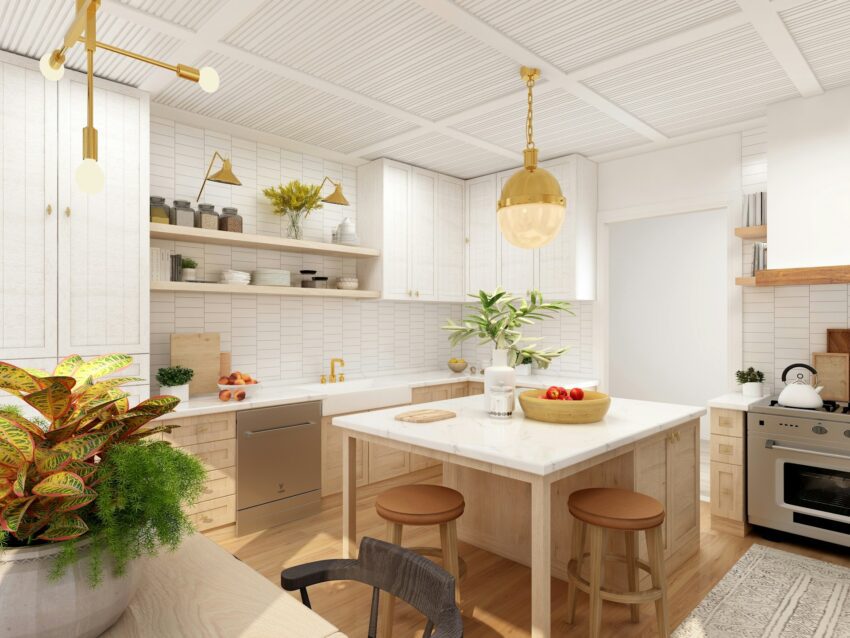Key Takeaways
- Understand the importance of lighting in home design.
- Learn the different types of lighting and their uses.
- Get tips on selecting the right fixtures for any room.
- Discover how to blend various lighting styles for a cohesive look.
- Explore the latest trends and timeless design principles.
The Importance of Lighting in Home Design
For a living environment to be both useful and comfortable, lighting is essential. In addition to illuminating the space, proper lighting also improves the atmosphere and mood. Imagine entering a poorly lit space where you can hardly see anything, as opposed to a well-lighted one that makes you feel comfortable and welcome. The difference is night and day. Companies like VisualComfort offer a wide variety of lighting fixtures that can help transform any space.
According to a study by the American Society of Interior Designers, 68% of homeowners felt that lighting is critical in creating the perfect ambiance. It’s not just about making a space look good; good lighting can improve mood, productivity, and even health. Whether you’re reading a book in a cozy corner or hosting a dinner party, the right lighting can make all the difference. So, how do you go about integrating timeless lighting design into your home?
Types of Lighting and Their Uses
You may achieve the ideal balance in your home by being aware of the many lighting options. Every kind has a different function and can significantly alter the appearance and atmosphere of a space. Here’s a breakdown of the main types of lighting:
- Ambient Lighting: This is your general illumination that provides overall lighting for a room. The main source of light in the room is ambient lighting, which keeps the space well-lit and inviting. Think ceiling lights, chandeliers, or large fixtures that flood the room with light.
- Task Lighting: Task lighting is targeted lighting that highlights places where carrying out activities like reading, cooking, or using a computer is required. Task lighting, such as desk lamps, under-cabinet lights in the kitchen, and adjustable spotlights, can simplify and improve daily tasks.
- Accent Lighting: Accent lighting is purely decorative; it draws attention to architectural details, artwork, or other focal points in the space. Track lighting, wall sconces, and spotlights can all assist in highlighting particular components you wish to highlight and add visual interest to your space.
Selecting the Right Fixtures for Each Room
Different rooms in a home require different lighting solutions. The kitchen, for instance, benefits from bright, focused lighting, while the living room may need a combination of ambient and accent lighting. Here are some tips on selecting the right fixtures for various rooms to create an inviting and functional environment:
- Kitchen: Use under-cabinet lights for task lighting, complemented by ceiling-mounted ambient lights. Pendant lights over the island can add both functionality and style. A well-lit kitchen makes meal preparation easier and safer.
- Living Room: Incorporate floor lamps, table lamps, and ceiling lights to create layers of light. Using a mix of lighting sources can make your living room versatile for different activities, from watching TV to hosting guests. Dimmer switches can be a great addition for adjusting the ambiance, allowing you to easily switch from a bright, social setting to a cozy, relaxed one.
- Bedroom: Opt for softer ambient lights along with bedside lamps for reading. Additionally fashionable and useful, wall sconces can free up room on your nightstands. Consider warm, soothing lights to create a serene and restful atmosphere perfect for winding down at the end of the day.
Blending Various Lighting Styles
Mixing different lighting styles can create a unique and cohesive look in your home. For example, combining vintage chandeliers with modern recessed lights can add character and depth to a space. The key is to ensure that the various elements work together harmoniously and don’t clash but rather complement each other.
Imagine a rustic living room with industrial-style pendant lights and minimalist floor lamps. By blending these styles, you create layers of interest that make the room feel both curated and comfortable. This blend of old and new can bring a dynamic and engaging aesthetic to your home. The versatility of resources like Architectural Digest showcases how blending styles can often result in the most beautiful and functional designs, offering ample inspiration for your own home.
Latest Trends and Timeless Principles
Incorporating the latest trends can keep your home feeling contemporary, while timeless principles ensure longevity. Crystal fixtures and industrial designs are currently popular, but classic elements like wrought iron and brass finishes remain evergreen. Staying updated with current trends can rejuvenate your space, but timeless elements ensure it remains stylish for years.
For example, adding a crystal chandelier to your dining room can elevate the space, making it feel luxurious and sophisticated, while brass fixtures in the bathroom can add a touch of timeless elegance and warmth. According to HGTV features, blending modern and classic elements creates a balanced look that stands the test of time. By integrating both, you can create a home that feels fresh yet enduring.


